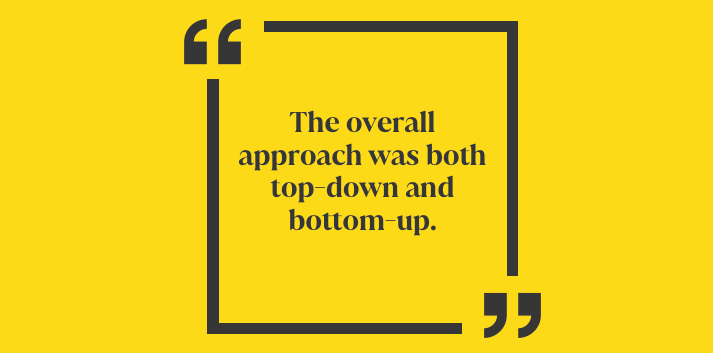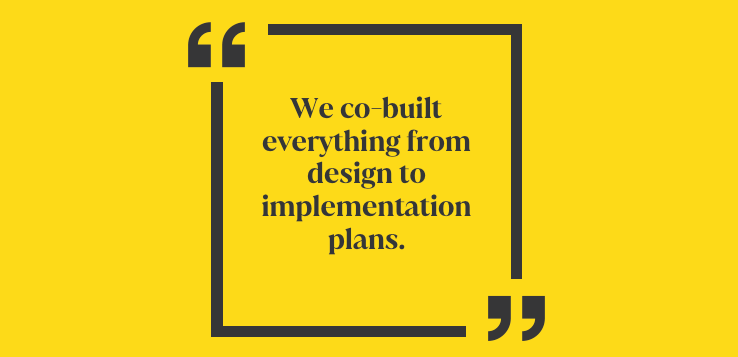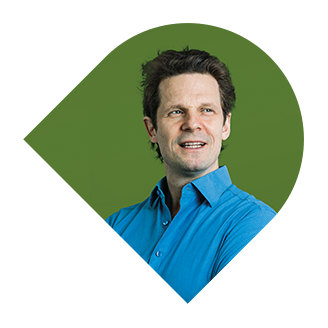An in-depth interview with Jailza Pauly to understand how to implement culture change.
For this newsletter, we got to talk to Jailza Pauly, Organizational Development & Change Lead at Bayer Pharmaceuticals, who has been one of the leads of the culture advancement program currently being deployed in the division. She shares with us precious insights about designing, launching and scaling such an ambitious program – all with her refreshing down-to-earth point of view.
Read till the end to discover her 5 key pieces of advice if your company wants to foster culture change!
With passion for breakthroughs, Bayer Pharmaceuticals embarked on a holistic transformation journey to achieve its strategic goals in an environment of increasing volatility and disruption. Less than a year later, the cultural component of the program, designed around practices that favor new behaviors, has already touched thousands of employees with tangible results.

How would you describe the program?
The program is a multi-week intact team experience, which we see as the engine of our culture change. This experience is the place for teams to learn how to be more flexible, to include the voices in the room, to take informed risks, and to be faster in how they move toward actions.
Since 2019 it became evident that change around the way we work and think could serve as a key enabler to realize the Pharma strategy. Based on surveys and interviews with both external and internal stakeholders, we had identified three culture attributes we wanted to see more of in the company. We decided to partner with Fabric and think together about what we could put in place to bring these attributes to life.
We needed something very hands-on and relevant to the business so that teams could immediately apply this to their work. Thus, this team experience was designed to transform those three culture attributes into actions thanks to specific practices, i.e., methods and processes for meetings, team organization and decision-making. The program is truly an experience, not a training. Because language also shapes perception, we describe it as such. And the teams use their own business challenges, not fictitious content, as they go through the practices.

The overall approach was both top-down and bottom-up. Senior leaders and their teams were going to participate in coaching sessions. But we needed to work with all teams. We knew it was key to create capability in the organization and to have a lot of people quickly emulate a different mindset and new behaviors.
What effects did the project have in the organization?
Change is an ongoing and long-term conversation, and the detailed analysis of the impact is still a work in progress. What I can say is where teams have adopted the practices, we have many testimonials that the way work is done has profoundly changed.
For example, we have feedback from a country leadership team that they have reduced the time spent in decision meetings and their exchanges are much more inclusive. One senior leader mentioned they no longer participate in “pre-alignment” meetings; instead, healthy debate happens in the room with the whole team. And another colleague, who was quite doubtful about the program, mentioned how much more open they have become to taking risks with the team and learning fast from their experiments.
We also collect feedback from participants 30/60/90 days after they go through the team experience. Results are very positive: 89% indicate that their meetings create value for all team members; 87% share that the team takes full control and accountability for decisions that are safe to try; and 90% are clear on what they need to do to help the team accomplish outcomes and results.
While assessing the long-term impact requires more work (and time), the testimonials and initial data are encouraging. Both leaders and employees see change and value gained by adopting those practices. However, we stay careful because those results always need time to be established as a routine.
According to you, what are the ingredients in the pedagogy that made the biggest impact, that were the most important?
One of the most critical elements is the fact that culture coaches (the internal coaches who train teams during the program) come from the business and have been extensively prepared by Fabric to deliver the program. It makes a great difference, because they have knowledge of the company and feel confident to run the sessions.
Another important step was that we were very mindful in the choice of practices. You need to be very intentional about what you want to accomplish with the practices. They need to be part of the day to day, mid-term and long-term business activities. We based our choices on the culture attributes we want to see more of in the organization.
We also knew we had to deploy the program at scale, and make sure it sticks. Fabric brought the idea of having team facilitators: in each team, we have one or two facilitators, people who receive training to be guardians of the practices. With this mechanism, we are creating capability in the organization and in the teams, so the program is sustainable. Regarding the issue of scale: we believe it’s important to launch this type of program with the intent to scale and to scale fast. This way, even people who may be reluctant to embrace change are positively caught in the wave of transformation.
Last but not least, we also had a focus on leadership. During the team experience, we support the leaders as they are navigating the shift from “command and control” to empowered teams through team lead peer sessions. Their role changes and this needs to be addressed.
What do you think is specific to Fabric’s approach?
It really felt like a true partnership right from the start. We co-built everything from design to implementation plans. We can have honest and sometimes difficult conversations, and it’s really refreshing (laughs)! We were candid regarding challenges as well as limitations and engaged in real dialogue; Fabric was also open to trade-offs that needed to be made along the way.

Let’s be real, launching such a program and scaling fast was no easy task. But with Fabric’s help, we felt prepared to do it. For example, a lot of attention was needed for the content production as well as for the overall scheduling, and Fabric’s project manager Alexis Guillotin teamed up with our internal colleagues to set up the logistics of this huge program in an efficient way.
In the design itself, what Fabric offered was a comprehensive experience with not only training for the culture coaches but also resources embedded in the teams to help keep the practices alive, and a focus on leaders as well. That’s a unique approach and a package that I didn’t see elsewhere.
If someone wanted to start a similar project, what advice would you give them?
A few things come to mind:
- 1. Have a good, concrete idea about what you want to impact. This focus is key.
- 2. Be sure to have sponsors at executive level otherwise things will not scale up quickly.
- 3. Select internal coaches, if possible, to work with the teams. Look for those who are interested in new ways of working and truly committed to change in the organization. They role model the behaviors all the time, do the bulk of the program’s work, and connect with all the participating teams.
- 4. Tell the stories! We realized it was super important for awareness, momentum, and recognition of those who are changing behavior.
- 5. Do not under-estimate the logistics. Find a few amazing people to help on this topic, and automatize as much as you can in the back office; for scale this is super important.
And finally, be ready for the ups and downs; it’s no small endeavor aiming to reach 20% of the organization for participation in such a transformation experience as intact teams. I’m very thankful for our amazing culture coaches, project team members, sponsors and that Fabric has been a true partner in this adventure!
Thank you again to Jailza Pauly for sharing those powerful insights with us!
If your company is facing similar challenges and you think Fabric would be a good fit to tackle them with you, please reach out!

